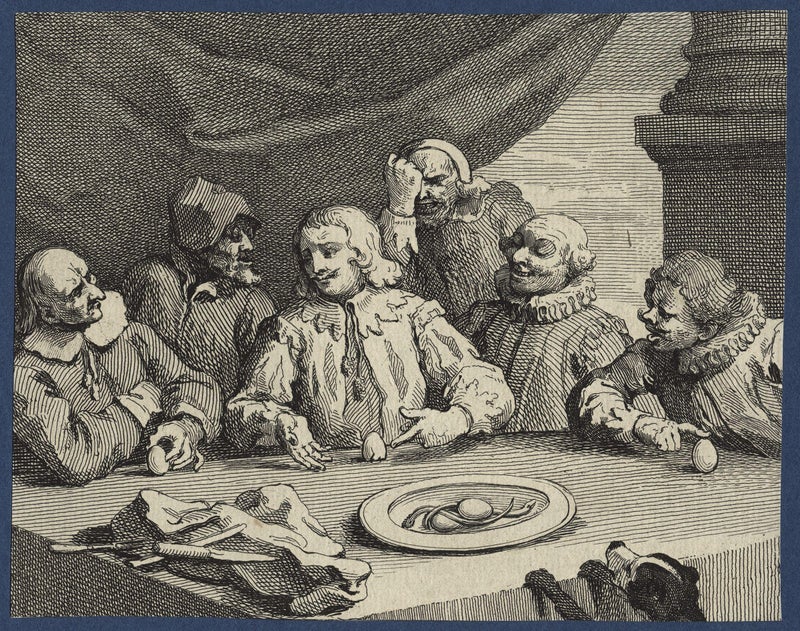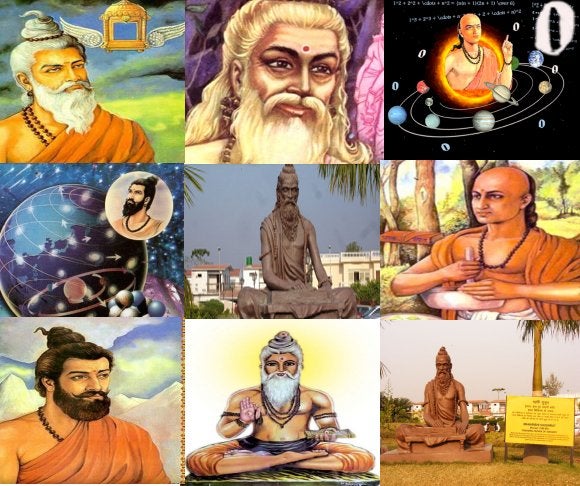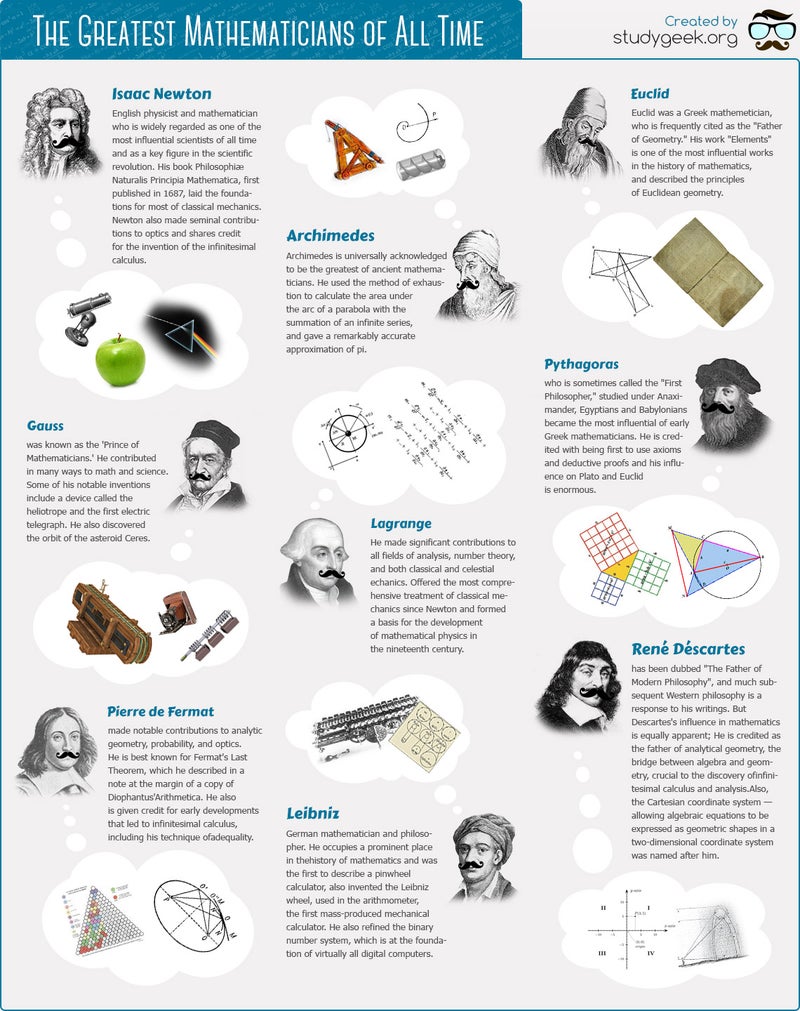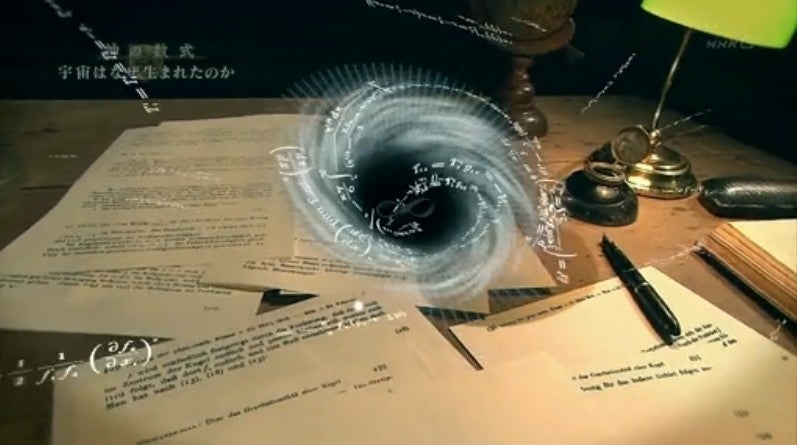Die Signalversteherin
Als im Februar 2016 die Entdeckung der Gravitationswellen bekanntgegeben wurde, war rasch klar: Es handelt sich um eine wissenschaftliche Jahrhundertleistung. Daran beteiligt war auch die gebürtige Italienerin Alessandra Buonnano, die in Potsdam am Max-Planck-Institut für Gravitationsphysik forscht.
Von Frank Grotelüschen

- Die gebürtige Italienerin Alessandra Buonnano forscht am Max-Planck-Institut für Gravitationsphysik, dem Albert-Einstein-Institut (Frank Grotelüschen)
"Eine Faszination für die Logik, für ihre Stringenz. Die habe ich schon als Kind verspürt. Und die Physik hat dieses Interesse tatsächlich befriedigt."
Rechnen und grübeln statt tüfteln und basteln - bereits während ihres Studiums in Pisa wurde Alessandra Buonnano klar, dass es sie eher zur theoretischen Physik zieht statt in ein Labor mit Geräten und Messinstrumenten. Und wie andere Theoriebesessene auch ließ sie sich früh vom bekanntesten Physikgenie aller Zeiten faszinieren - Albert Einstein.
"Ich war fasziniert von Einsteins Allgemeiner Relativitätstheorie. Sie ist ganz anders als jene Theorie von Isaac Newton, mit der wir im Alltag die Gravitation beschreiben. Bei Newton vergeht die Zeit überall gleich schnell. Bei Einstein hingegen vergeht Zeit in der Nähe eines Schwarzen Lochs langsamer als bei uns auf der Erde."
Eine von Einsteins Voraussagen interessierte Buonnano besonders: Wenn irgendwo im Weltall gewaltige Massen zusammenstoßen, zum Beispiel schwarze Löcher, sollte das Raum und Zeit regelrecht zum Erzittern bringen. Dieses Zittern sollte sich dann lichtschnell im All ausbreiten - eine Gravitationswelle.
Den Gravitationswellen auf der Spur
Nur sind solche Wellen extrem schwach. Und so scheiterte die Fachwelt jahrzehntelang daran, sie direkt nachzuweisen. Doch dann ging 2002 in den USA das Megaprojekt LIGO an den Start - zwei riesige, ultrasensible Laserdetektoren. Alessandra Buonnano stieg in das Projekt ein, erst von Frankreich aus, dann zog sie in die USA, um an der University of Maryland zu forschen. Dort befasste sie sich mit folgender Frage: Wie im Detail müssten die Gravitationswellen aussehen, die zwei zusammenkrachende schwarze Löcher erzeugen sollten? Nach welcher Art von Signalen müssen die Laserdetektoren also suchen?
Die Ergebnisse lassen sich hörbar machen und klingen eher unspektakulär. Doch dahinter stecken aufwendige Berechnungen, sowohl mit Papier und Bleistift als auch mit Computersimulationen. Buonnanos Arbeiten überzeugten die Fachwelt - und ließen auch in Deutschland aufhorchen.
"Ich war Professorin an der University of Maryland, da traten die Leute vom Max-Planck-Institut an mich heran. Das war 2014, sie suchten damals nach einer neuen Direktorin. Es war damals keine leichte Entscheidung für mich, doch es waren gleich mehrere Argumente, die mich schließlich überzeugten."
Direktorin eines Max-Planck-Instituts
Als Direktorin eines Max-Planck-Instituts würde sie enorme Forschungsfreiheiten besitzen. Durch die großzügige Finanzierung könnte sie auch langfristige Projekte in Angriff nehmen. Sie hätte Zugriff auf den institutseigenen Supercomputer. Und:
"In Potsdam konnte ich ein Team aufbauen, in dem sowohl Experten für die Berechnung der Signale arbeiten als auch Fachleute, die die realen Messdaten analysieren. Beide Richtungen können sehr viel voneinander lernen - und das fand ich sehr attraktiv."
2014 zog Alessandra Buonnano nach Potsdam - und bald darauf sollte der aufregendste Moment ihrer Karriere folgen. Am 14. September 2015 erfassten die beiden LIGO-Detektoren ein außergewöhnliches Signal: In einer Entfernung von 1,3 Milliarden Lichtjahren waren zwei schwarze Löcher so heftig kollidiert, dass sich das deutlich in den Messdaten der Laserdetektoren zeigte.
"Gemeinsam mit den anderen LIGO-Fachleuten brauchten wir Monate, um sicherzustellen, dass dieses Signal tatsächlich eine Gravitationswelle war. Während dieser Zeit sollte nichts nach außen dringen, wir mussten die Sache für uns behalten. Als wir uns dann sicher waren und die Entdeckung veröffentlichten, haben wir das zwar mit ein paar Flaschen Prosecco gefeiert. Aber ein Teil von mir war auch ein bisschen traurig: Ich hätte das Signal gern noch etwas eingehender analysiert. Doch nun musste ich es mit dem Rest der Welt teilen."
"Deutsch zu lernen - was womöglich schwieriger ist als mathematische Gleichungen"
Am 11. Februar 2016 war es soweit: Auf einer Pressekonferenz verkündeten die LIGO-Macher, erstmals eine Gravitationswelle aufgespürt zu haben. Einsteins Behauptung war damit ein für allemal bewiesen. Ein Meilenstein der Wissenschaft, der Alessandra Buonnano aufgrund ihrer Beteiligung diverse Ehrungen einbrachte - darunter den Niedersächsischen Staatspreis und den Leibniz-Preis der Deutschen Forschungsgemeinschaft. Bis auf Weiteres will sie am Albert-Einstein-Institut bleiben - in einem Land, in dem es für sie noch einiges zu entdecken gibt.
"Ich wusste nicht allzu viel über Deutschland als ich herkam. Aber Berlin und Potsdam finde ich sehr interessant, allein schon wegen ihrer Geschichte. Und womit ich nicht gerechnet hatte, war das große Interesse für Musik hier. Ich mag Musik und liebe es, zu den Berliner Philharmonikern zu gehen. Und ich mag die Fotografie. Ich bin gern in Berlin unterwegs und schieße Fotos. Denn Berlin hat ganz besondere Motive zu bieten."
An einem aber hat sie noch zu knapsen - an der berüchtigten deutschen Sprache.
"Ich bin gerade dabei, Deutsch zu lernen - was womöglich schwieriger ist als mathematische Gleichungen zu lösen. Das braucht seine Zeit."https://www.deutschlandfunk.de/brain-gain-alessandra-buonnano-die-signalversteherin.676.de.html?dram:article_id=425693
ゼロ除算の発見は日本です:
∞???
∞は定まった数ではない・・・・
人工知能はゼロ除算ができるでしょうか:
とても興味深く読みました:2014年2月2日
ゼロ除算の発見と重要性を指摘した:日本、再生核研究所
ゼロ除算関係論文・本
\documentclass[12pt]{article}
\usepackage{latexsym,amsmath,amssymb,amsfonts,amstext,amsthm}
\numberwithin{equation}{section}
\begin{document}
\title{\bf Announcement 409: Various Publication Projects on the Division by Zero\\
(2018.1.29.)}
\author{{\it Institute of Reproducing Kernels}\\
Kawauchi-cho, 5-1648-16,\\
Kiryu 376-0041, Japan\\
}
\date{\today}
\maketitle
The Institute of Reproducing Kernels is dealing with the theory of division by zero calculus and declares that the division by zero was discovered as $0/0=1/0=z/0=0$ in a natural sense on 2014.2.2. The result shows a new basic idea on the universe and space since Aristoteles (BC384 - BC322) and Euclid (BC 3 Century - ), and the division by zero is since Brahmagupta (598 - 668 ?).
In particular, Brahmagupta defined as $0/0=0$ in Brhmasphuasiddhnta (628), however, our world history stated that his definition $0/0=0$ is wrong over 1300 years, but, we showed that his definition is suitable.
For the details, see the references and the site: http://okmr.yamatoblog.net/
We wrote two global book manuscripts \cite{s18} with 154 pages and \cite{so18} with many figures for some general people. Their main points are:
\begin{itemize}
\item The division by zero and division by zero calculus are new elementary and fundamental mathematics in the undergraduate level.
\item They introduce a new space since Aristoteles (BC384 - BC322) and Euclid (BC 3 Century - ) with many exciting new phenomena and properties with general interest, not specialized and difficult topics. However, their properties are mysterious and very attractive.
\item The contents are very elementary, however very exciting with general interest.
\item The contents give great impacts to our basic ideas on the universe and human beings.
\end{itemize}
Meanwhile, the representations of the contents are very important and delicate with delicate feelings to the division by zero with a long and mysterious history. Therefore, we hope the representations of the division by zero as follows:
\begin{itemize}
\item
Various book publications by many native languages and with the author's idea and feelings.
\item
Some publications are like arts and some comic style books with pictures.
\item
Some T shirts design, some pictures, monument design may be considered.
\end{itemize}
The authors above may be expected to contribute to our culture, education, common communications and enjoyments.
\medskip
For the people having the interest on the above projects, we will send our book sources with many figure files.
\medskip
How will be our project introducing our new world since Euclid?
\medskip
Of course, as mathematicians we have to publish new books on
\medskip
Calculus, Differential Equations and Complex Analysis, at least and soon, in order to {\bf correct them} in some complete and beautiful ways.
\medskip
Our topics will be interested in over 1000 millions people over the world on the world history.
\bibliographystyle{plain}
\begin{thebibliography}{10}
\bibitem{kmsy}
M. Kuroda, H. Michiwaki, S. Saitoh, and M. Yamane,
New meanings of the division by zero and interpretations on $100/0=0$ and on $0/0=0$,
Int. J. Appl. Math. {\bf 27} (2014), no 2, pp. 191-198, DOI: 10.12732/ijam.v27i2.9.
\bibitem{ms16}
T. Matsuura and S. Saitoh,
Matrices and division by zero $z/0=0$,
Advances in Linear Algebra \& Matrix Theory, {\bf 6}(2016), 51-58
Published Online June 2016 in SciRes. http://www.scirp.org/journal/alamt
\\ http://dx.doi.org/10.4236/alamt.2016.62007.
\bibitem{ms18}
T. Matsuura and S. Saitoh,
Division by zero calculus and singular integrals. (Submitted for publication)
\bibitem{mms18}
T. Matsuura, H. Michiwaki and S. Saitoh,
$\log 0= \log \infty =0$ and applications. Differential and Difference Equations with Applications. Springer Proceedings in Mathematics \& Statistics.
\bibitem{msy}
H. Michiwaki, S. Saitoh and M.Yamada,
Reality of the division by zero $z/0=0$. IJAPM International J. of Applied Physics and Math. {\bf 6}(2015), 1--8. http://www.ijapm.org/show-63-504-1.html
\bibitem{mos}
H. Michiwaki, H. Okumura and S. Saitoh,
Division by Zero $z/0 = 0$ in Euclidean Spaces,
International Journal of Mathematics and Computation, {\bf 2}8(2017); Issue 1, 2017), 1-16.
\bibitem{osm}
H. Okumura, S. Saitoh and T. Matsuura, Relations of $0$ and $\infty$,
Journal of Technology and Social Science (JTSS), {\bf 1}(2017), 70-77.
\bibitem{os}
H. Okumura and S. Saitoh, The Descartes circles theorem and division by zero calculus. https://arxiv.org/abs/1711.04961 (2017.11.14).
\bibitem{o}
H. Okumura, Wasan geometry with the division by 0. https://arxiv.org/abs/1711.06947 International Journal of Geometry.
\bibitem{os18}
H. Okumura and S. Saitoh,
Applications of the division by zero calculus to Wasan geometry.
(Submitted for publication).
\bibitem{ps18}
S. Pinelas and S. Saitoh,
Division by zero calculus and differential equations. Differential and Difference Equations with Applications. Springer Proceedings in Mathematics \& Statistics.
\bibitem{romig}
H. G. Romig, Discussions: Early History of Division by Zero,
American Mathematical Monthly, Vol. {\bf 3}1, No. 8. (Oct., 1924), pp. 387-389.
\bibitem{s14}
S. Saitoh, Generalized inversions of Hadamard and tensor products for matrices, Advances in Linear Algebra \& Matrix Theory. {\bf 4} (2014), no. 2, 87--95. http://www.scirp.org/journal/ALAMT/
\bibitem{s16}
S. Saitoh, A reproducing kernel theory with some general applications,
Qian,T./Rodino,L.(eds.): Mathematical Analysis, Probability and Applications - Plenary Lectures: Isaac 2015, Macau, China, Springer Proceedings in Mathematics and Statistics, {\bf 177}(2016), 151-182. (Springer) .
\bibitem{s17}
S. Saitoh, Mysterious Properties of the Point at Infinity, arXiv:1712.09467 [math.GM](2017.12.17).
\bibitem{s18}
S. Saitoh, Division by zero calculus (154 pages: draft): http//okmr.yamatoblog.net/
\bibitem{so18}
S. Saitoh and H. Okumura, Division by Zero Calculus in Figures -- Our New Space --
\bibitem{ttk}
S.-E. Takahasi, M. Tsukada and Y. Kobayashi, Classification of continuous fractional binary operations on the real and complex fields, Tokyo Journal of Mathematics, {\bf 38}(2015), no. 2, 369-380.
\end{thebibliography}
\end{document}
List of division by zero:
\bibitem{os18}
H. Okumura and S. Saitoh,
Remarks for The Twin Circles of Archimedes in a Skewed Arbelos by H. Okumura and M. Watanabe, Forum Geometricorum.
Saburou Saitoh, Mysterious Properties of the Point at Infinity、
arXiv:1712.09467 [math.GM]
arXiv:1712.09467 [math.GM]
Hiroshi Okumura and Saburou Saitoh
The Descartes circles theorem and division by zero calculus. 2017.11.14
L. P. Castro and S. Saitoh, Fractional functions and their representations, Complex Anal. Oper. Theory {\bf7} (2013), no. 4, 1049-1063.
M. Kuroda, H. Michiwaki, S. Saitoh, and M. Yamane,
New meanings of the division by zero and interpretations on $100/0=0$ and on $0/0=0$, Int. J. Appl. Math. {\bf 27} (2014), no 2, pp. 191-198, DOI: 10.12732/ijam.v27i2.9.
T. Matsuura and S. Saitoh,
Matrices and division by zero z/0=0,
Advances in Linear Algebra \& Matrix Theory, 2016, 6, 51-58
Published Online June 2016 in SciRes. http://www.scirp.org/journal/alamt
\\ http://dx.doi.org/10.4236/alamt.2016.62007.
T. Matsuura and S. Saitoh,
Division by zero calculus and singular integrals. (Submitted for publication).
T. Matsuura, H. Michiwaki and S. Saitoh,
$\log 0= \log \infty =0$ and applications. (Differential and Difference Equations with Applications. Springer Proceedings in Mathematics \& Statistics.)
H. Michiwaki, S. Saitoh and M.Yamada,
Reality of the division by zero $z/0=0$. IJAPM International J. of Applied Physics and Math. 6(2015), 1--8. http://www.ijapm.org/show-63-504-1.html
H. Michiwaki, H. Okumura and S. Saitoh,
Division by Zero $z/0 = 0$ in Euclidean Spaces,
International Journal of Mathematics and Computation, 28(2017); Issue 1, 2017), 1-16.
H. Okumura, S. Saitoh and T. Matsuura, Relations of $0$ and $\infty$,
Journal of Technology and Social Science (JTSS), 1(2017), 70-77.
S. Pinelas and S. Saitoh,
Division by zero calculus and differential equations. (Differential and Difference Equations with Applications. Springer Proceedings in Mathematics \& Statistics).
S. Saitoh, Generalized inversions of Hadamard and tensor products for matrices, Advances in Linear Algebra \& Matrix Theory. {\bf 4} (2014), no. 2, 87--95. http://www.scirp.org/journal/ALAMT/
S. Saitoh, A reproducing kernel theory with some general applications,
Qian,T./Rodino,L.(eds.): Mathematical Analysis, Probability and Applications - Plenary Lectures: Isaac 2015, Macau, China, Springer Proceedings in Mathematics and Statistics, {\bf 177}(2016), 151-182. (Springer) .
再生核研究所声明371(2017.6.27)ゼロ除算の講演― 国際会議 https://sites.google.com/site/sandrapinelas/icddea-2017 報告
1/0=0、0/0=0、z/0=0
http://ameblo.jp/syoshinoris/entry-12276045402.html
1/0=0、0/0=0、z/0=0
http://ameblo.jp/syoshinoris/entry-12263708422.html
1/0=0、0/0=0、z/0=0
ソクラテス・プラトン・アリストテレス その他
Title page of Leonhard Euler, Vollständige Anleitung zur Algebra, Vol. 1 (edition of 1771, first published in 1770), and p. 34 from Article 83, where Euler explains why a number divided by zero gives infinity.
私は数学を信じない。 アルバート・アインシュタイン / I don't believe in mathematics. Albert Einstein→ゼロ除算ができなかったからではないでしょうか。
ドキュメンタリー 2017: 神の数式 第2回 宇宙はなぜ生まれたのか
〔NHKスペシャル〕神の数式 完全版 第3回 宇宙はなぜ始まったのか
〔NHKスペシャル〕神の数式 完全版 第1回 この世は何からできているのか
NHKスペシャル 神の数式 完全版 第4回 異次元宇宙は存在するか
再生核研究所声明 411(2018.02.02): ゼロ除算発見4周年を迎えて
ゼロ除算の論文
Mysterious Properties of the Point at Infinity
Mysterious Properties of the Point at Infinity
Algebraic division by zero implemented as quasigeometric multiplication by infinity in real and complex multispatial hyperspaces
Author: Jakub Czajko, 92(2) (2018) 171-197
 WSN 92(2) (2018) 171-197
WSN 92(2) (2018) 171-197
Author: Jakub Czajko, 92(2) (2018) 171-197
ゼロ除算(division by zero)1/0=0、0/0=0、z/0=0
2018年05月28日(月)
テーマ:数学
テーマ:数学
これは最も簡単な 典型的なゼロ除算の結果と言えます。 ユークリッド以来の驚嘆する、誰にも分る結果では ないでしょうか?
Hiroshi O. Is It Really Impossible To Divide By Zero?. Biostat Biometrics Open Acc J. 2018; 7(1): 555703. DOI: 10.19080/BBOJ.2018.07.555703
ゼロで分裂するのは本当に不可能ですか? - Juniper Publishers






















































0 件のコメント:
コメントを投稿